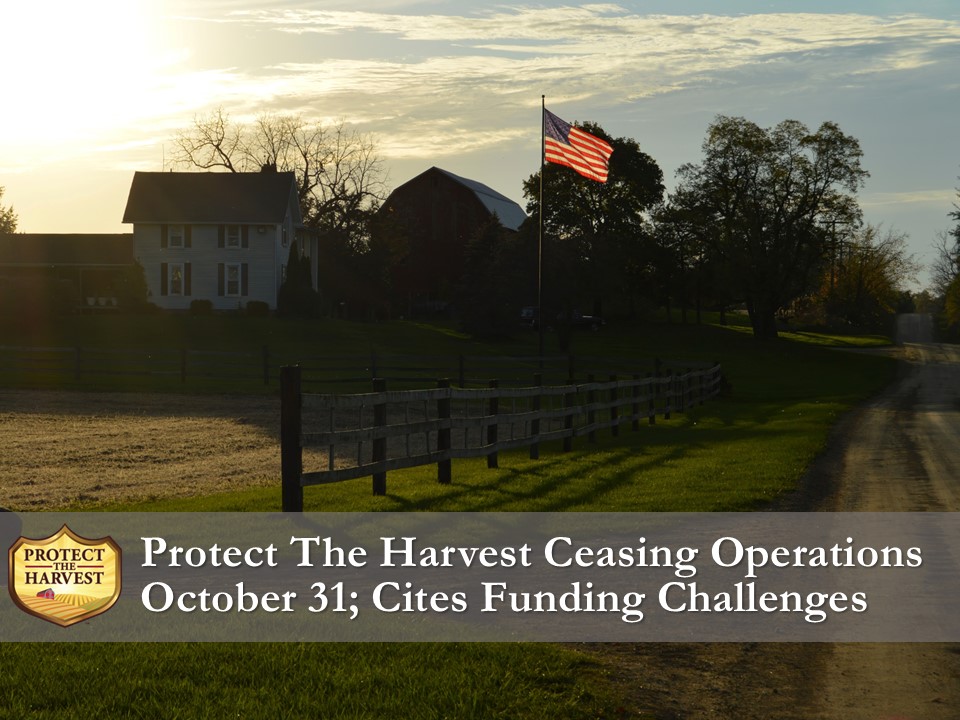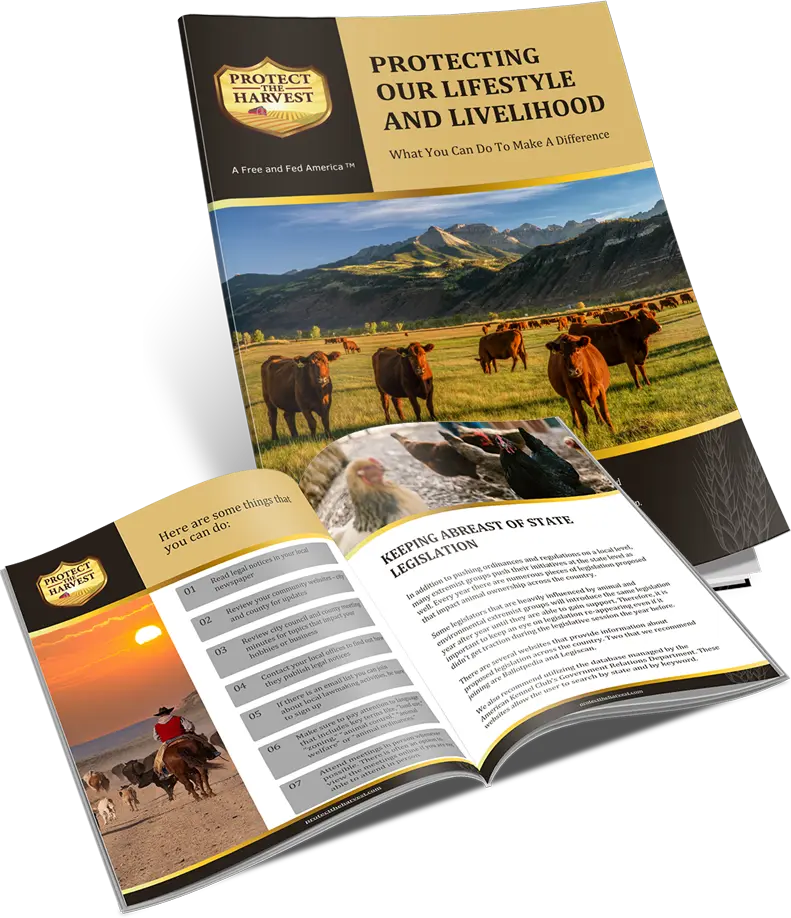
Sky-High Meat Prices, Supply Chain Difficulties, and the Struggles of Protein Production
By Jaclyn Krymowski for Protect The Harvest
It’s undeniable from both the consumer and producer standpoints that there are a lot of challenges in today’s animal protein markets. For hungry families, prices continue to rise across the board from steaks to eggs and everywhere in between.
The cost of food, and especially meat at the grocery store, is frustrating for everyone. Both shoppers and retailers are asking questions in an attempt to have some clarity on why their food prices continue to soar. They want to know who, if anyone, is profiting at their expense. The reality is a complex story. Shoppers need to know that both farmers and ranchers feel the same financial strains as consumers because they need to feed their families as well. They also have added pressure to meet market demand even when profitability is extremely difficult.
Farmers and Ranchers are Not Making Big Money
The price consumers see during their routine shopping is from the perspective of an end product on a shelf. This makes it easy to assume that surely someone on a more fundamental level of the supply chain is profiting.
Most shoppers mistakenly believe that higher grocery store prices mean that farmers, ranchers, processors, and/or distributors also see that reflected in their bottom lines. An in-depth look across the supply chain will show that the transition of funds from the farm to the dinner table is far from simple or equitable across the board.
Cost of Production
Farmers and ranchers have to contend with various costs of inputs and numerous regulations to start or maintain even a small farm, ranch, or processing plant. Getting the funds to expand or help enhance efficiency in these times of difficulty is seldom practical.
Several factors can play into the price gap between the producer’s (farmer and rancher) take-home pay and the retail price. These start on the farm with upfront costs such as purchasing livestock, maintaining housing and equipment, feed purchases, veterinary care, and labor to name a very few. Each category has its unique supply and demand chain that is just as subject to price increases or restrictions as any other industry.
Record Inflation
Nationwide inflation has reached its highest one-year price hike in 40 years, according to Fortune, with the consumer price index jumping 8.5% in 2022. Virtually no segment of the economy or private industry has been left unscathed, leaving producers to be faced with handling these costs.
Resource Usage Regulations – Water
There are also land-use issues and resource restrictions, like water, that can factor heavily into the cost of production on the farm or ranch level.
In a past Protect The Harvest article, we discussed the impact of the EPA’s decision to reverse the Navigable Waters Protection Rule. Farmers and ranchers supported this rule because it promoted both clean water and land preservation while still allowing these essential resources to remain accessible.
Changes and restrictions to resource usage regulations often impact farmers and ranchers first because it puts a limitation on efficiently raising animals. While many agriculture advocacy groups are quick to voice their needs and concerns, especially when it comes to finding solutions that both protect the environment and support farming, little can often be done when decisions are made within the legislative and political spheres. Many of the detrimental decisions are made by individuals with little to no knowledge of the inputs that go into livestock production and management.
Of course, there can also be limitations on resources when nature decides to take control. An excellent example of this is the ongoing drought situation in the western U.S., which impacts the land where animals live along with the forages and grains they consume.
Local droughts impact the close available resources, thus forcing a rancher or farmer to look out of state for pasture, hay, or other feed products. It also makes what feed products are available limited, more costly to produce, and higher in demand. Cost of feeding is the number one cost in any type of livestock production, and unfortunately, it is also one of the easiest to fluctuate depending on the economy and weather.
Resource Usage Regulations – Land
Land usage is often left to the mercy of state regulations or private owners. According to the USDA, nearly 40% of all farmland used in the U.S. is rented. Many cattle are grazed on public lands in the western region, which is subject to restrictions and changes. Ranchers with grazing allotments and water rights on Federally managed lands in the West are not immune from the impact of regulations or allotment payments. Nor are they immune from the ever-increasing cost of maintaining water resources, fencing, and other required infrastructure.
This is why movements by animal extremists to arrange protected “wildlife corridors” on public and private land are highly concerning for producers who rely on this utilization for their livestock.
Trucking, Finishing, and Processing
Once animals leave the farm to continue their journey along the supply chain (such as to a finisher or processor) there is another round of costs that will be reduced from the final paycheck. These include details like trucking costs (which fluctuate due to fuel prices) and costs associated with processing packaging and shipping to retail. There is no doubt that the rising cost of fuel is hitting America’s food supply system very hard.
The cost of the processing itself, of which producers have no control, is heavily contingent on associated costs of things like power, labor, transportation, and packaging to name a few. Those associated costs are compounded even more due to each one being affected by its supply chain issues.
Processing is Expensive
There’s been a rise in interest for some producers to build their own processing facilities. This is especially common in the beef market due to the increase in retail cuts and the decrease in live cattle prices. However, there are many challenges and government regulations with starting such a facility.
To put some of the cost and scale of processing into perspective, let’s examine the logistics of small and medium-sized facilities that would be implemented on the local level.
A meat processing plant’s expectations vary depending on its size. A medium plant can handle anywhere from 100 to 1,000 head of livestock per week with larger plants handling up to 5,000 per day. A small plant can have expectations of 20 beef, 40 pigs, and 60 lambs a week.
However, we need to consider the overhead costs, regardless of size. An estimate on a cost per square foot basis that includes permits, site prep, utilities, property, building, and some equipment (additional equipment for processing can be between $300,000 to $400,000) costs $400 per square foot with a plant from 3,000 to 4,000 square feet. This estimated cost can also depend greatly on location, and costs can decrease if it means repurposing a building.
In light of the challenges, there have been some industry and government efforts to aid farmers, ranchers, and other segments of the protein industry amid the turbulent economy. By providing aid to the production side, the hope is that retail prices will also be more favorable for consumers. Even with these in place, there are still significant difficulties with entry or scaling up.
One of the issues is that some find the recent U.S. Department of Agriculture grant for small-scale meat processors burdensome to apply for. There are also cumbersome stipulations of a recent expansion program (the Meat and Poultry Processing Expansion Program or MPPTA) that makes it difficult to get funds for expanding to take on more business.
Expanding with either facilities, equipment or employees is hugely vital for processing plants to keep up with the increased demand. All of these require adequate funding in a timely manner.
Complicated application processes coupled with an overwhelming number of regulations make it difficult for plant owners to effectively get the funds promptly that would allow them to meet their needs.
Country of Origin Labeling
Another issue that has been developing since 2015 is the repeal of COOL (Country Of Origin Labeling). This identifier gave consumers clarity on the origin of their beef and pork products. With the repeal, it allowed the imports of foreign meat product locations to be unidentifiable due to re-labeling.
This repeal created a ripple effect in pork and beef prices, allowing a greater volume of meat to be sold, making the profit margin smaller for our local farmers and ranchers. While in 2017, several industry advocacy groups officially filed a complaint in the U.S. District Court for the Eastern District of Washington against USDA, the issue remains not fully solved. It is still possible for foreign beef products repackaged in an official USDA-inspected site to be labeled as a “Product of the USA.”
Actions Being Taken in Hopes to Provide Solutions
USDA’s decision to launch MPPTA hopes to provide technical assistance to meat and poultry grant applicants and grant-funded projects. USDA accepted applications for $23.6 million in competitive grant funding available through the programming.
In a press release, Agriculture Secretary Tom Vilsack stated: “Meat and poultry processing is a complex sector that requires significant planning and forethought to manage economic viability concurrently with worker, food, and environmental safety.”
This was made available to applicants with intentions focused on improving processing capacity and efficiency, developing new and expanding existing markets, better meeting consumer/producer demands, maintaining positive inspection ratings and food safety standards, and obtaining a larger commercial presence. However, as previously mentioned, applicants have limitations based on location and if they are currently operational.
South Dakota is Setting a Great Example
Through COVID-19 relief funds in South Dakota, $5 million is being dedicated to meat processing ($1.5 million specific to brand new facility start-ups), which has allowed some folks to open a facility; there are an additional 99 grants that will help expand other new facilities or purchase equipment.
“The Meat Processing Grant program received more than 100 applications. Ninety-nine applications, including 16 new facilities and 83 existing facilities, were approved for funding with awards ranging from $9,000 to $108,207,” says a South
Dakota State News Press Release:
In a local news report, a small South Dakota butcher, Randy Gruenwald, explained the need for financial aid by putting the costs into perspective. “A grinder costs 20,000 dollars, a freezer could cost you up to 50,” he said. “Everything takes a lot longer to get done, everything costs a lot more to get done.”
More Needs to Be Done
Supporting local farmers, ranchers and packers, especially as production and processing costs increase, is certainly important but it isn’t a long-term solution to the issues the industry currently facing. It is up to us to make sure our legislators are working to protect our food supply and food security. Make sure you voice your opinion to your local, state, and federal office appointees so they understand their constituents need to be heard.
Stay up to date with ongoing coverage from Protect the Harvest about issues and solutions facing livestock producers and the protein supply chain.
Links
Learn more about the Navigable Waters Protection Rule HERE
Read more about the drought challenges HERE
Read more about wildlife corridors issues HERE
Read more about small scale processing plants HERE
Read more about USDA grant programs HERE
Read more about the repeal of COOL HERE


